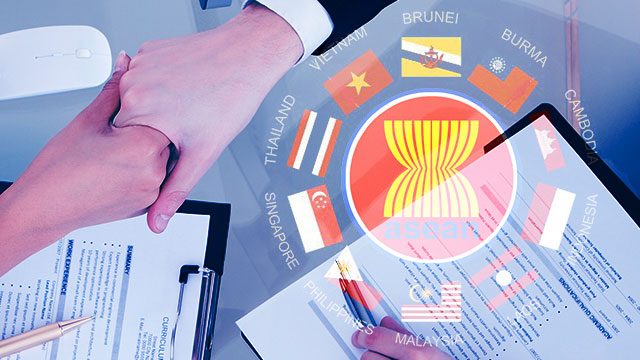SUMMARY
This is AI generated summarization, which may have errors. For context, always refer to the full article.

MANILA, Philippines – The expansion of non-bank financial institutions in the Philippines will be key in sustaining small and medium enterprises (SMEs) once the country integrates with its Association of Southeast Asian Nations (ASEAN) neighbors next year, economists said on Wednesday, November 12.
SMEs are a significant part of the ASEAN economy comprising 96% of ASEAN enterprises to date.
SMEs comprise 50% to 95% of domestic employment in the ASEAN, 30% to 53% of the Gross Domestic Product (GDP) of the member-states; and 19% to 31% of exports.
An approaching economic union of Southeast Asian nations – from the least developed countries like Lao PDR to the most developed countries like Singapore – will draw tight competition in supply chains, said Arjun Goswami, director of the Asian Development Bank’s (ADB) regional economic integration office.
“And non-banks are needed to serve SMEs because commercial banks don’t accept non-land assets as collateral,” Goswami said at the ASEAN integration forum organized by the Ateneo Professional Schools on Wednesday. (READ: ‘ASEAN integration an opportunity, not a threat to PH SMEs’)
Support for SMEs is crucial because ASEAN economies will be competing with each other, especially when it comes to trade, several economists who attended the forum said.
The integration aims to remove trade barriers within the ASEAN community, and as such, SMEs producing similar products from other economies might be at the losing end due to lower prices of goods offered by its neighbors, said Senator Paolo Benigno Aquino IV, chair of the Senate committee on trade, commerce, and entrepreneurship.
Support for SMEs
According to Aquino, the support for SMEs could come in the form of investments in social enterprise and corporate social responsibility projects (CSR).
A successful example would be the Jollibee Group’s farmer entrepreneurship program, Aquino said. The project taps several farming communities across the country by providing access to credit and market, infrastructure, including purchasing their products which would be used for the company’s production.
Since 2008, a farmers’ cooperative in Nueva Ecija supplies onions directly to Jollibee Foods Corporation at the prevailing market price “instead of sourcing them abroad,” Aquino added.
Many companies might not be able to replicate Jollibee’s business model for now – Aquino clarifies – as projects like this are possible through funding from a company’s social responsibility arm – or through government intervention.
“We need to look at the supply chain. Investments through CSR projects and social enterprise are needed to develop communities,” he stressed.
Elevating the economy’s supply chain should be seen as a national commitment rather than just one consideration in the looming sub-regional economic integration, Aquino added.
“With or without the AEC (ASEAN Economic Community), we owe it to ourselves to be able to push for that inclusive growth. This is the best time to do that in our economy because we are in that ‘sweet spot,’” Aquino said.
Trade Assistant Secretary Rafaelita Aldaba agreed that investing in non-bank financial institutions would provide SMEs a window to innovate, to move up, and contribute a more sophisticated output. (READ: SMEs in the Philippines: Going beyond survival)
The country is resuscitating the manufacturing sector as it has been seen to create jobs while contributing to the gross domestic product (GDP).
The manufacturing sector grew 8.8% for the first half of 2014, and accounting to 23.2% of GDP.
The Philippines’ economic growth stood at 6.4% in the second quarter this year, making it the country the second fastest growing economy in Asia. But poverty incidence among Filipino families has almost remained constant since 2006. (READ: Specter of inequality to haunt strong PH economy – ADB)
To solve this, a bigger push for the manufacturing sector is needed, Goswami said.
A McKinsey Global Institute report in November said that an integrated ASEAN can address productivity challenges and find new catalysts for growth by capitalizing on global flows, urbanization, and technology.
The report added it could reap a greater share of global flows of up to $615 billion if it could address labor productivity issues. – Rappler.com
Add a comment
How does this make you feel?





There are no comments yet. Add your comment to start the conversation.